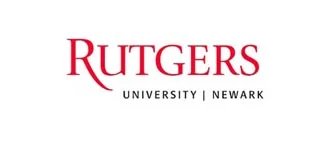

Digital Learning - Improve Mathematics Instruction and Lower The Achievement Gap
Given the views [ Lev Gonick compares the quality of online live remote and its benefits to that of offline experience] Blended learning holds tremendous promise for improving New Jersey’s high school mathematics instruction and possibly the potential to lower the achievement gap between high and low socio-economic status (SES) school districts. Covid-19 has forced a faster convergence of educational policies to embrace 21st century technology standards, the standardization of educational curriculums and assessments. Policymakers and educators are now forced to give urgent consideration to lowering systemic barriers to implementation of blended learning. This includes providing needed funding and policies to support its implementation, as well as technology and professional development resources. Failure to do this may result in the continued disproportionate concentration of new technologies among students in higher SES school districts relative to lower SES districts.
As indicated here: The approach [Lev Gonick, indicates from ASU's perspective the support system in place for educators and entrepreneurs and the opportunities for innovation via their digital backpack of tools] If we can unlock the full potential of blended learning, this disruptive innovation could improve the efficiency, quality, and accessibility of education and become one of the most effective learning systems for teaching high school mathematics. This conclusion is supported by the teachers’ perceptions that the greatest value-added of blended models include improved pedagogy, increased rigor, greater differentiation, increased instructional effectiveness and pass rates.
It is imperative for administration and stakeholders to address the huge demands for more professional development and technology resources. The focus for professional development efforts needs to include learning management systems and strategies to combine the most effective elements of traditional instruction and virtual instruction. Failure to do this may result in poorly designed blended learning that intensifies the negative learning experience for students.
Professional learning should be designed around the mathematics course context, as learner orientations and processes in blended courses influence the meanings participants ascribe to blended learning (Paige Leigh McDonald, 2012). Professional learning designs must place emphasis on core values, practices, technologies, and the system of people in order to facilitate logical changes and continued growth within their information ecology(Nardi, Bonnie and O”Day, Vicki; 1999 p. 49; Watson, John, 2011[ 5] , p.15).
Funding for Professional Learning Designed Around the Mathematics Course Context[ 11]
It is necessary to appropriate funding for professional learning that is designed around the mathematics course context, as learner orientations and processes in blended courses influence the meanings participants ascribe to blended learning (Paige Leigh McDonald, 2012). Policymakers and administrators should guide professional learning designs and ensure appropriate emphasis on practices and technologies within our information ecology that optimize blended course designs. Check empowerment [ Michael Chasen challenges users on the need to maximise opportunities with zoom for the upcoming generation too]

Principal Reviews

2020 Alumni

2020 Microsoft FG Award

Rutgers Business School Student Experiential Learning Program